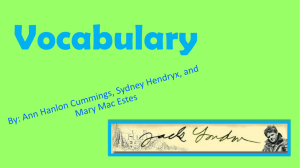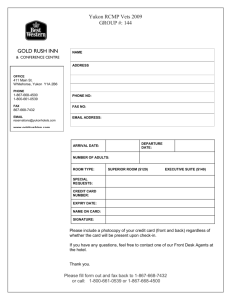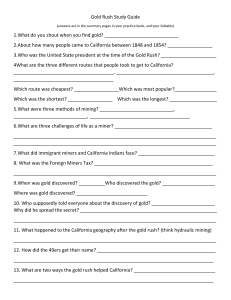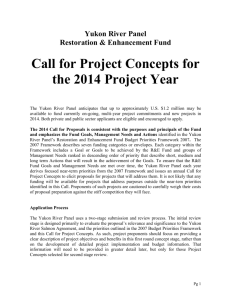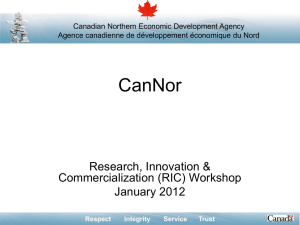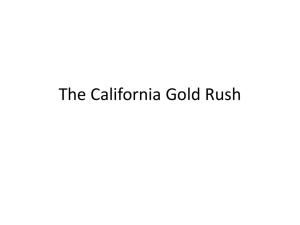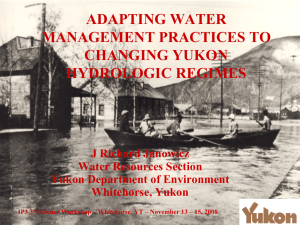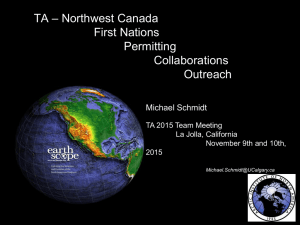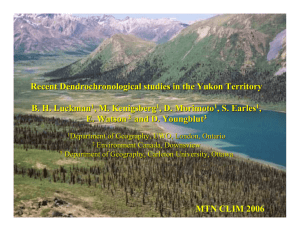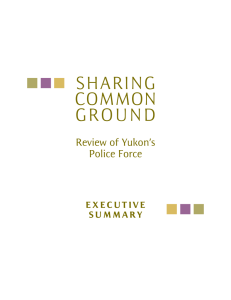The Nature of Gold: An Robbins, William G.
advertisement
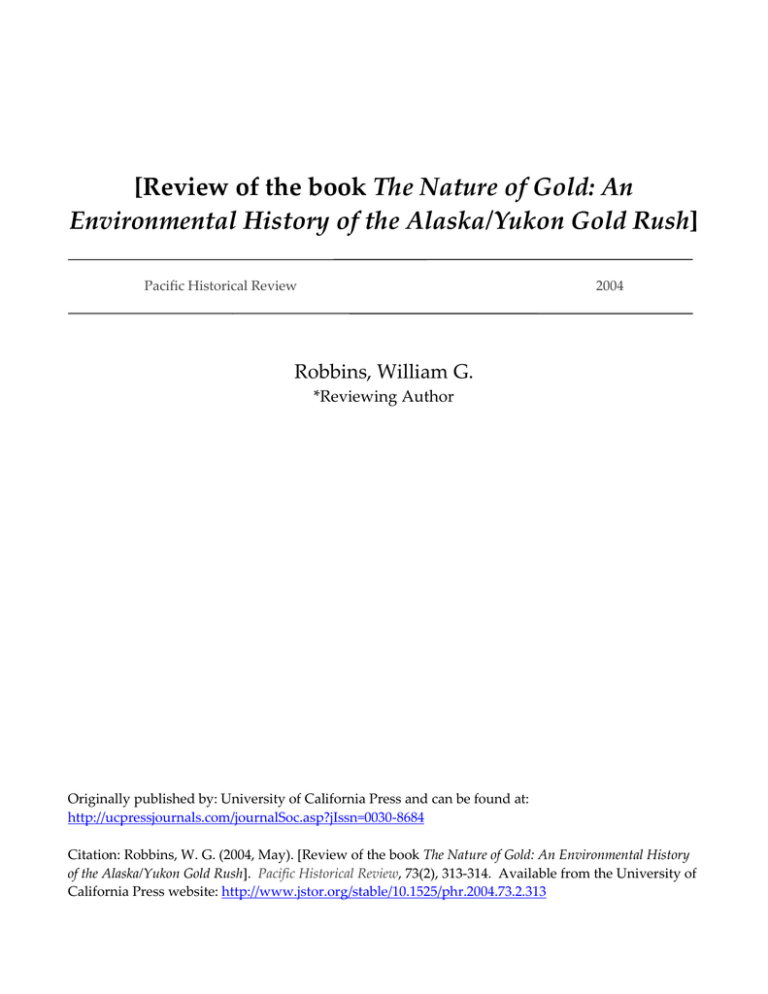
[Review of the book The Nature of Gold: An Environmental History of the Alaska/Yukon Gold Rush] Pacific Historical Review 2004 Robbins, William G. *Reviewing Author Originally published by: University of California Press and can be found at: http://ucpressjournals.com/journalSoc.asp?jIssn=0030-8684 Citation: Robbins, W. G. (2004, May). [Review of the book The Nature of Gold: An Environmental History of the Alaska/Yukon Gold Rush]. Pacific Historical Review, 73(2), 313-314. Available from the University of California Press website: http://www.jstor.org/stable/10.1525/phr.2004.73.2.313 07-C3031-REV 4/20/04 6:25 AM Page 313 Reviews of Books from the Hispanic past. Not lost in other essays examining local government concerns such as prisons, land rights, and levies are the chronic abuses suffered especially by Indians, Chinese immigrants, and African Americans. Robert J. Chandler’s concluding essay probes in a specific way Richard White’s famous dictum on the preeminent role the federal government played in administering the West. California generally stood as an exception to this rule; long-distant Washington often failed to respond quickly enough to the new state’s overwhelming needs. Still, the federal government learned valuable lessons from California’s fate, and it contributed (belatedly) in land and transportation issues, sometimes playing a progressive role in racial and environmental concerns as well. This essay caps a tour de force by a worthy group of California historians rightly refocusing attention on a formative period. University of Nebraska at Kearney VERNON L. VOLPE The Nature of Gold: An Environmental History of the Alaska/Yukon Gold Rush. By Kathryn Morse. (Seattle, University of Washington Press, 2003. xviii 298 pp. $29.95 paper) For people even vaguely familiar with the Klondike gold rush of 1897, the stark black and white photographs of miners climbing the steep, precipitous trail to Chilkoot Pass is a deeply burnished memory of heroic human effort. The mass rush in search of earth’s most valuable mineral involved herculean labor in a demanding environment, supply lines that linked the Alaskan-Canadian upper Yukon River with the industrial world, and the literal ransacking of the flora and fauna upon which Native people subsisted. The ideas important to this provocative book reach across a global landscape, persuasively arguing that people in the remote fastnesses of North America and those living in Eastern industrial settings were all consumers of nature. This is a book about gold in its broadest context. It is a story about the Klondike, the “money question,” and much more. Because “[g]old’s value came from culture” (p. 39), Kathryn Morse contends, The Nature of Gold is steeped in cultural meaning. The first chapter, “The Culture of Gold,” roams the world far beyond the Yukon and suggests that late nineteenth-century “Goldbugs” and “Silverites” naturalized the qualities of their respective metals to promote political positions. While gold standard supporters argued for Darwinian evolution (and gold) as the true source of value, sil- 313 07-C3031-REV 4/20/04 6:25 AM Page 314 314 Pacific Historical Review ver advocates promoted the idea that producers were the legitimate mainsprings to earthly wealth. Although they differed over the “social” and “natural” creation of money, silverites themselves “naturalized productive labor as the true and natural source of economic value” (p. 35). Like other modern environmental histories, this book underscores the role that technology played in closing time and space, a phenomenon the author calls “the conquest-of-nature story” (p. 64). While miners may have “naturalized” the goods they purchased from the industrialized world, the author misreads the situation for many Klondikers who grew to adulthood in a less than fullblown industrial system. I sometimes believe that the further today’s scholars are removed from the world of physical labor, the more they seem inclined toward postmodern constructions to explain simple worldly feats. This is not to diminish an otherwise complex and nuanced study but to point to problematic references such as the “disassembly” of forests and riparian environments. In the end, Morse sets the story straight when she concludes that the hundreds of photographs of mining activity in the Yukon “reveal a deadened landscape, . . . an expanse of rocky rubble, dirt piles, and shallow wastewater pools, latticed by flumes” (p. 110). And the miners’ successes? Although few of them found gold in significant quantities, many of them invested their life savings, worked hard and suffered through harsh northern winters, and ultimately wound up losers in the great game of chance. In a seldomtold story about the legendary ascent to Chilkoot Pass, the author points out that the completion of a railroad from Skagway to White Horse on the upper Yukon in 1899 freed rich and poor alike from the dramatic adventure featured in the old photographs. This important book deserves a wide reading. Oregon State University WILLIAM G. ROBBINS Native American in the Land of the Shogun: Ranald MacDonald and the Opening of Japan. By Frederik L. Schodt. (Berkeley, Stone Bridge Press, 2003. xiv 418 pp. $39.95 cloth, $19.95 paper) “This book is about a man who did an extraordinary thing, and then fell through the cracks of history.” With these words Frederik Schodt opens his biography of Ranald MacDonald. MacDonald’s “extraordinary thing,” of course, was his sojourn in Japan in 1848 –1849, fully five years before Commodore Matthew Perry arrived to “open Japan” after two-and-a-half centuries of national iso-
